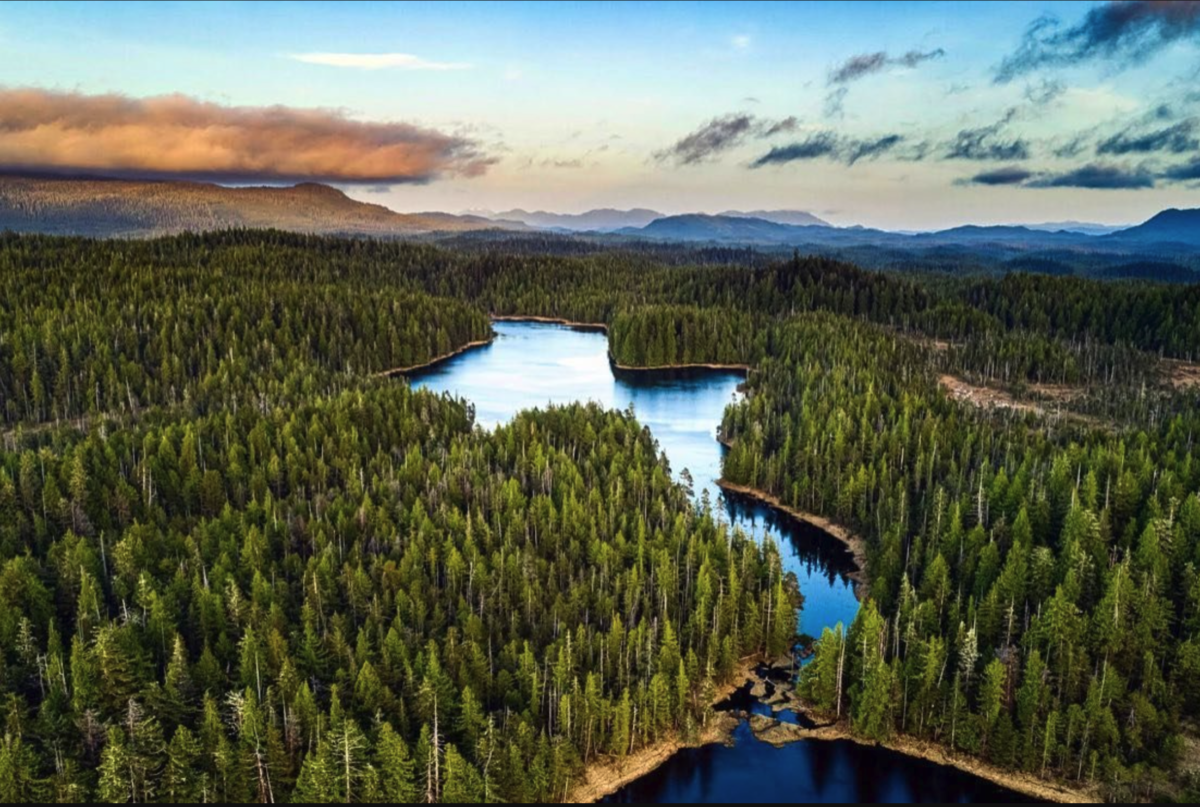By Glynn Wilson –
WASHINGTON, D.C. — On the heels of a historic agreement in Dubai calling for the first time for countries to transition away from fossil fuel use for powering energy and transportation, the chief cause of climate change due to global warming, the Biden administration just announced a proposal to conserve old-growth forests by banning logging for the first time in national forests.
Related: Climate Talks End With Call for Moving Away from Fossil Fuel Use
While the United States and other developed countries always come under criticism for not doing enough to make up for their dominant role in creating most of the planet warming greenhouse gases, and in recent days President Joe Biden himself has been criticized by environmentalists and the press for not doing enough to promote how the administration is working on the massive crisis of climate change, the announcement on Tuesday by the U.S. Forest Service and the Department of Agriculture is consistent with direction from President Biden’s Executive Order 14072 from April, 2022, to conserve and restore old and mature forests.
Healthy, climate-resilient old-growth forests store large amounts of carbon, increase biodiversity, reduce wildfire risks, enable subsistence and cultural uses, as well as providing outdoor recreational opportunities and promoting sustainable local economic development.
“Old-growth forests are a vital part of our ecosystems and a special cultural resource. This proposed nationwide forest plan amendment – the first in the agency’s history – is an important step in conserving these national treasures,” Agriculture Secretary Tom Vilsack said in making the announcement. “Climate change is presenting new threats like historic droughts and catastrophic wildfire. This clear direction will help our old-growth forests thrive across our shared landscape.”
Land management plans provide direction for how national forests and grasslands are managed for their many uses, including conservation. The proposed amendment will use the best available science, including Indigenous Knowledge, to provide consistent direction related to old-growth forest conditions across national forests and grasslands.
“Our forests absorb carbon dioxide equivalent to more than 10% of our nation’s annual greenhouse gas emissions,” said White House Council on Environmental Quality Chair Brenda Mallory. “Under President Biden’s leadership, our Administration is acting to conserve and restore old-growth forests so nature can continue to be a key climate solution.”
In June 2022, Secretary Vilsack followed through on President Biden’s Executive Order to conserve and restore old and mature forests and directed the Forest Service to take action to address the impacts of climate change, restore forests and support forest resilience.
These actions include defining and conducting the first-ever nationwide inventory of old-growth and mature forests across national forests and grasslands. Launched on Earth Day 2023, this initial inventory report shows that the Forest Service manages nearly 25 million acres of old growth and more than 68 million acres of mature forests on national forests and grasslands. The proposal relates only to lands managed by the Forest Service.
The announcement builds on this foundational work and other significant actions to conserve old-growth and mature forests, such as USDA’s restoration of roadless protections across nearly 9.4 million acres of the Tongass National Forest in Southeast Alaska.
USDA has also released the Climate Risk Viewer, a tool to assess climate risks and vulnerabilities on national forests and grasslands.
Additional actions to implement the direction from the Executive Order and the Secretary’s memo are forthcoming, including the finalization of a threat analysis on mature and old-growth forests and a proposed new national policy for monitoring the health of national forests and grasslands.
“The Forest Service will continue to advance strategies and engage critical partners to build resilience and ensure future actions are responsive to the significant climate stressors that forests face,” the agency says in the press release about the proposal, which is subject to public comments.
The consistent management direction contained in the proposed nationwide forest plan amendment would direct place-based strategies for old-growth forest conservation and management, developed in partnership with Tribal communities and in collaboration with local stakeholders, the agency says. These strategies will be adaptive and factor in the unique opportunities and challenges of a particular area, which will allow for more flexibility in responding to rapid changes in wildfire behavior, drought, insects and disease. The amendment would prohibit vegetation management within old-growth forest conditions when the primary purpose is to grow, tend, harvest or regenerate trees for economic reasons.
The proposed national plan amendment was also informed by public comments on the Forest Service’s Advanced Notice for Proposed Rule Making. The proposed plan amendment would also complement other related efforts across the Forest Service, including the Wildfire Crisis Strategy, Reforestation Strategy and other strategic guidance documents.
In Fiscal Year 2023, the Forest Service met and exceeded key milestones in addressing the wildfire crisis, restoring national forests and supporting rural communities. These benchmarks included treating 4.3 million acres of national forest system lands to reduce wildfire risk and 1.9 million acres of national forest land with prescribed fire – both were agency records and were enabled through strong partnerships with Tribes, state and local governments, conservation groups, industry and other important stakeholders.
The plan does not ban all logging in all forests under all circumstances. It leaves open the possibility of continued cutting under certain conditions. Forest Service Deputy Chief Chris French said forest treatments the agency uses to reduce wildfire risk, such as thinning understory trees, would still be allowed in old-growth stands to protect them from out-of-control fire.
In the Southeast, where the Forest Service is trying to restore the longleaf pine forests that used to blanket coastal areas, the agency could still cut down large, old loblolly pines, the main tree grown for the timber industry.
The administration’s plans are likely to please environmentalists, the Washington Post reports. Some have pressured the White House to protect the nation’s oldest trees. But advocates did not get everything they wanted, such as permanent safeguards for mature trees, which could eventually turn into old growth. Although the proposal left open the possibility of future protections for these trees, agency officials said they are probably years away from drafting them.
The timber industry has pushed back against the administration’s efforts to protect old growth, arguing that logging creates jobs in economically distressed areas and helps reduce fire danger.
Some environmental advocates also questioned whether the policy will last, as a future administration could easily undo it.
The new language about protecting old growth also won’t be finalized until the agency has completed an environmental impact statement, which it expects to finish in early 2025, according to deadline reporting from the Washington Post.
“I wish they’d initiated this earlier. I wish they were doing a rulemaking,” said Chris Wood, president of the conservation group Trout Unlimited.
Still, he said: “This is a big deal. This is a different agency than it was 20 years ago. The Forest Service’s appetite for going in and liquidating old growth is pretty much retired.”
It’s unclear how the new proposal will affect the agency’s planned timber sales, some of which include forest lands dotted with mature and old-growth trees.
In a letter sent to forest managers Monday, French informed them of the agency’s plans and wrote that “effective immediately” any forest management activities planned for old-growth stands in national forests would need to be reviewed and approved.
For more information about trees, an HBO Original Documentary called “Trees and Other Entanglements” just premiered Dec. 12 on Max, a deeply human tale of the relationship between humans and the natural world.
___
If you support truth in reporting with no paywall, and fearless writing with no popup ads or sponsored content, consider making a contribution today with GoFundMe or Patreon or PayPal. We just tell it like it is, no sensational clickbait or pretentious BS.














